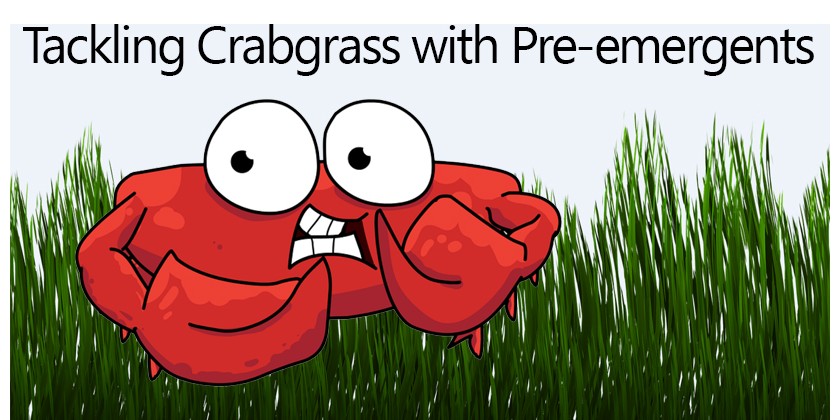
You know the feeling. You faithfully fertilize and care for your lawn throughout the spring, and then poof, June arrives only to reveal new crabgrass growing in your beautifully manicured lawn! These pesky weeds can pop up anywhere, but sunny, hot and dry environments are the prime areas for growth. Crabgrass prefers weakened or bare areas and is often found along sidewalks and driveway edges where lawns may be thinned out due to edging.
A healthy lawn that is properly fertilized, hydrated, and mowed at the optimal height provides a strong defense against the villain, but even a small amount of crabgrass can quickly spread and choke out healthy grass.
Fresh crabgrass is a bright lime green color and looks like a miniature corn plant. As it matures it changes form and spreads into course clumps that are low to the ground. If the grass you are seeing is taller than the rest of the lawn you may be dealing with quack grass and not crabgrass.
Spring is the Time to Take Action
Crabgrass reveals itself in the summer, but it’s origin takes place in the fall when mature plants drop their seeds. The seeds stay dormant in the winter, then germinate in the spring when soil temperatures reach around 55-60 degrees Fahrenheit. Applying pre-emergent herbicides before germination occurs is the best way to rid yourself of these intruders.
Here are some tips for treating crabgrass in your lawn:
- Pre-emergent herbicides attack germinating seeds but are not effective at killing seeds while they are dormant. Consequently, you must treat in the early stages of new growth, right after the dormancy stage.
- Pre-emergents are available in liquid and granular formulations. Granules can be effectively dispersed using a garden spreader, while liquids work well using a pressurized weed sprayer.
- Apply pre-emergents when the soil temperature reaches 55 degrees. An old wives’ tale says to treat between the time that local forsythia begins to bloom, but before lilac plants bushes bloom.
- Check the label for instructions to ensure you are using the proper amount of product. Be sure to measure your lawn and calibrate your spreader as needed.
- Pre-emergent herbicides need water for activation. You can water after the product is applied, also a good time to apply these herbicides is the day before rain is forecasted.
- Be sure to protect yourself by wearing a long-sleeved shirt, long pants, gloves, and safety glasses.
- Your lawn may require a second application of herbicide. Post-emergent herbicides are available, but most landscapers agree that getting ahead of germination provides the best results.
- Always rinse out your spreader or weed sprayer after use to ensure no chemicals are left behind.
- You can also hand-pull weeds as they begin to emerge.
It is important to note that crabgrass cannot be controlled with broadleaf weed control products. Some fertilizers may include a pre-emergent but will not be as effective as a targeted treatment. Since well rooted crabgrass can take years to get under control, adding this step to your year-round landscape plan is time and money well spent.
For information on Solo spreaders and weed sprayers see: us.solo.global
